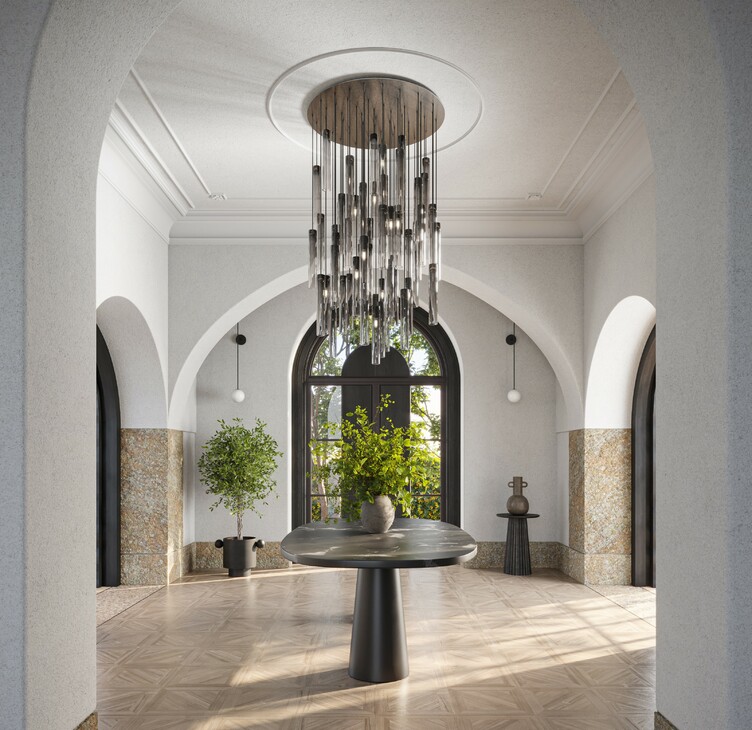For three decades, Rhode Island-based Tracy Glover Studio has conceived of joyful glass lighting designs and objects that tickle the imagination in more ways than one. The renowned studio’s work takes inspiration from the beauty of rain, flowers and constellations for its handblown, made-to-order pieces. The team also devises their designs in a way that lends to a fluid exchange of ideas, thanks to a system of interchangeable parts that allows for near- limitless-customization.
The studio’s Metropolis Socket Pendants, for example, can be arranged in a range of colourways. So can the Rondel Triple Surface Mount, a dynamic design that arranges three entrancing glass discs of varying hues and textures.
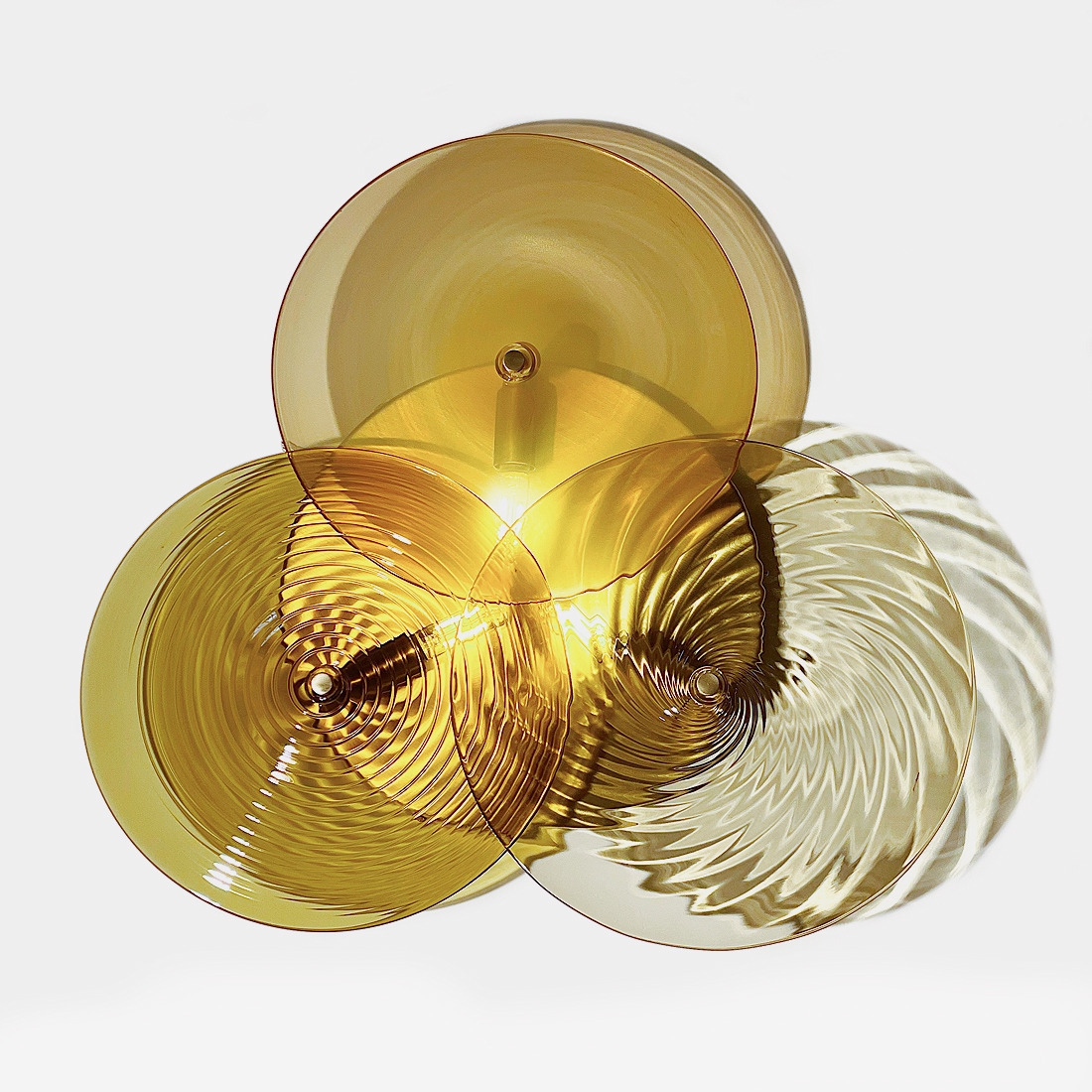
Tracy Glover Studio’s tantalizing Rondel Triple Surface Mount design certainly qualifies as eye candy.
Celebrating her eponymous studio’s 30th anniversary this year, Tracy Glover – whose morning rowing ritual is still non-negotiable given the stillness and insight the activity affords her – took a moment to reflect on her early design influences, what drives her to create, and her collaborative spirit.
Let’s start by talking about your design foundations. You grew up in a house where Scandinavian design was really treasured – tell us about being around that kind of design sensibility, and how that translated into where you are today.
My mother is Finnish, so she adored Finnish and Danish design. And the grade school I attended also had Bertoia chairs in the library; all I knew was that I loved going to the library and sitting in those chairs! I never knew what they were, or that they were famous or anything. I just had an eye for what I liked and for interesting design, and that really inspired me.
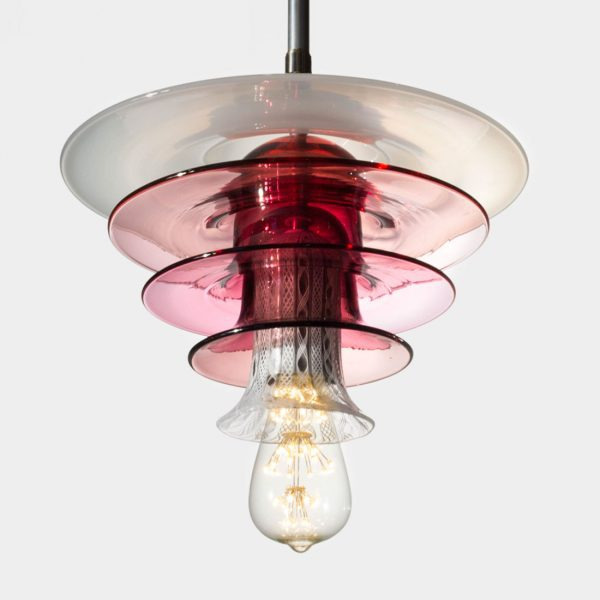
Tracy Glover points to the fabulous forms found in nature as an endless font of ideas. Her Studio’s Flower Pendant is an fetching example of how she takes those shapes from the great outdoors into a well-considered interior.
So, you were connecting with design even though you weren't aware of the “capital D” design aspects of it – it was simply something that made you react positively.
Yes, it really spoke to me. And our classrooms were demarcated by colour, and I really liked that.
That makes sense since form and colour are the signatures of what you do at Tracy Glover Studio. And glass is such an amazing medium that lends itself to so well to both of those concepts – how did you come to work with that medium in particular?
My mother and my sister both had unusual glass collections, and I always thought I would love to know how to make something like those designs. I was studying architecture, and I decided to transfer to the Rhode Island School of Design (RISD). It’s very competitive, and while I initially wanted to study illustration, I thought the easiest way to get into the school would be to apply as a glass major and I could switch my program later.
Little did I know it’s incredible glass program, and that the reason I was selected to take it was because of my architecture background. I became hooked on the process of glassmaking, and I still think it's magical. To this day, I can't believe all the stuff you can do with it!
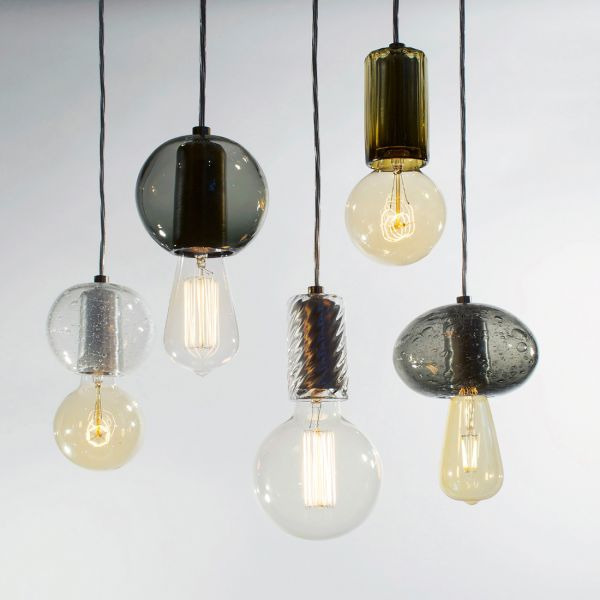
A cheery arrangement of shapes articulated in the Metropolis Socket Pendants.
How do you think that your architectural background gives you a different perspective in lighting design?
When I studied glass, everyone else in the class was making sculptural pieces and I was thinking of more functional things. Function and proportion are what I studied in architecture school, and what I learned at RISD beside the actual techniques was how to ideate – what to do with inspirations, and how to find inspiration. I think both programs taught me how to look at things with a different eye.
Let’s talk about your current inspirations, of which I know nature is a major one. Do you still go out to row every morning and feel inspired by your surroundings?
Yes, and it’s been thirty years now. It’s important for me to have an outlet where I don’t think about work – where I just lose myself in the process. It’s really refreshing, and it's a good time for ideas to come to me because my brain is shutting out all that other noise.
There are more literal nature-inspired pieces in your collections, like the Rain Chandelier for example, and then others that have more of an abstract quality. Can you talk about your design process and how these inspirations and ideas are filtered and brought to life?
It comes together in all different kinds of ways. I’m currently working on a new Blossom shape that started out from using the technique of applying glass bits to a cylinder, from which I could build out a flower shape and stylize the petals from there. And once I start with one thread of an idea, it can lead to another thread, too. I might start with a colour or a process, but then it starts to remind me of something else. This particular blossom design reminded me of lilies on lily pads, so then I start looking at that inspiration.
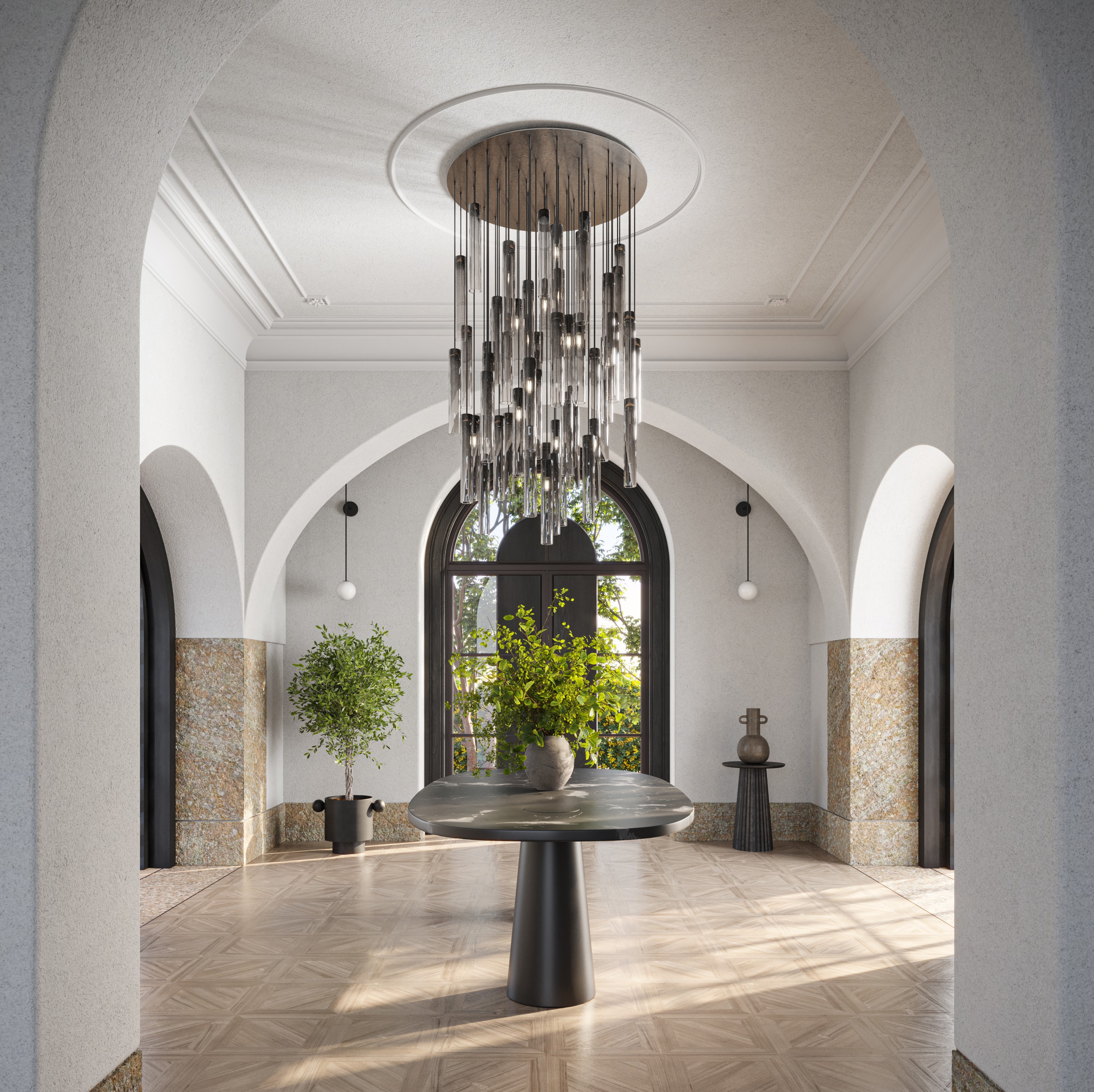
On that note, why is it important for you to offer so many customization aspects to your designs?
After you show somebody an idea, they often come back asking, ‘Could we do this instead?’ It’s also a very fun and saleable idea that people can customize something to the nth degree and make completely unique site-specific fixtures. Sometimes people will send me an idea that I never thought of before, and it makes me think, that that's a cool interpretation. I like the collaborative aspect of it.
And what about the collaborative aspects of your studio?
Collaboration comes very easily to me. At the time when I built my studio, one actually had to build it themselves; nobody was making pre-fab glassblowing studios that you could order, which you can buy now. I paid for a set of schematics, and then was told what materials to order. I had it all delivered and hired my friends to help me with the build. We chopped and welded and cast and built this thing from the ground up. And everybody had ideas for improvements and enhancements – it was quite a labour of love.
And the glassblowing process is so collaborative as well; you really don't work by yourself. Anytime a new person joins the team, they always come with a different set of skills and their own unique approach. It all adds to the inspiration, the idea that someone will join us and show us something that never occurred to us before and then I can add that to our repertoire. Everybody that works here likes the variety, and they like to be pushed and to learn. Having a team that's open to new ideas and being flexible serves all of us.
What’s been one of your favorite projects to work on over the last 30 years?
Years ago, I designed these big glass beads that could be hung on cables or chains. They appeared in a magazine, and someone had cut out the page and called me two years later with a design proposal. He said, I'm designing a penthouse in Las Vegas and I love colour. And I thought, I this would be great!
He asked if there was a way to have the cherished people who come to visit him add some kind of a metal tag with their name on it to my design, kind of like a family tree. So, we had little silver tags made that he would get engraved; they had a magnet and could be attached to the steel component of the design. That was really fun.
And after 30 years, how do you keep your creative juices flowing?
I have no lack of ideas – it's really getting things across the finish line; I have maybe a half-dozen ideas that are started but not finished. I also recently contacted a fellow designer to help me get over the line with a new idea. I've never done that before, and I'm really excited to see what she comes up with.

